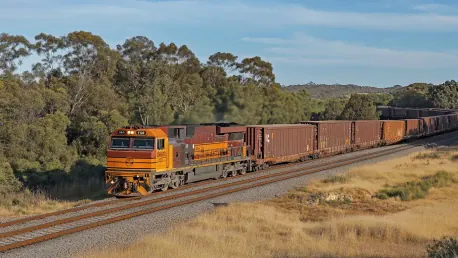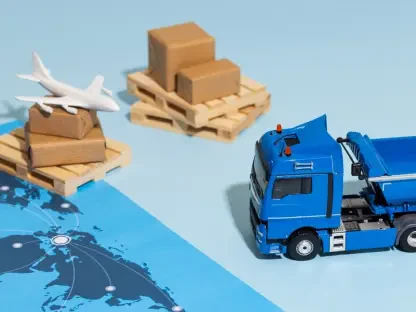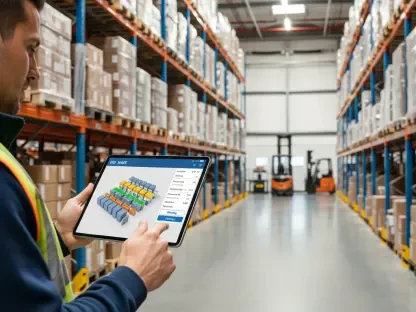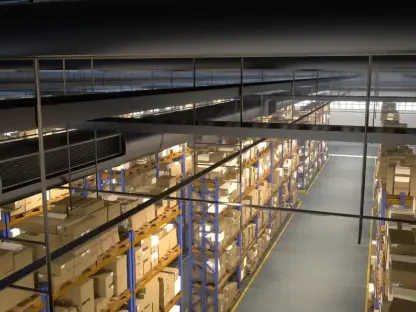In recent years, the rail freight industry has seen significant growth, technological advancements, and efficiency gains, demonstrating its crucial role in global supply chains and trade operations. This evolution is driven by efforts to enhance connectivity across regions, implement innovative technologies, and optimize operational standards in response to increasing demand for freight services. From integrating cutting-edge telematics to expanding locomotive fleets and forming strategic partnerships, these measures collectively contribute to the industry’s robust performance and capacity expansion.
Dynamic Expansion of Locomotive Fleets
One of the notable developments in the rail freight sector includes CLIP Intermodal’s decision to expand its initial order of locomotives by awarding Alstom an additional contract for five multi-system Traxx Universal locomotives. This brings their total fleet to 18 units. These advanced locomotives come equipped with Onvia signaling, enabling them to operate seamlessly in Poland, Germany, Austria, the Czech Republic, Slovakia, and Hungary. This strategic investment reflects CLIP Intermodal’s commitment to addressing growing demand more effectively while expanding its intermodal terminal in Swarzędz.
The expansion of locomotive fleets is not limited to private companies. Kazakhstan’s national railway, KTZ, reported a historic milestone by transporting 32 million tonnes of freight between Kazakhstan and China in 2024, a 13% increase from the previous year. The anticipated growth is expected to continue as China Railway joins the Middle Corridor Multimodal joint venture alongside Kazakhstan, Azerbaijan, and Georgia’s railways. This collaborative approach is set to boost train traffic through border crossings significantly at Altynkol – Khorgas and Dostyk – Alashankou, with an influx of freight expected in the coming months.
Technological Advancements Driving Efficiency
Technological advancements play a vital role in enhancing the efficiency and effectiveness of rail freight operations. Organizations such as RailPulse have certified Wabtec as a vendor for wagon telematics, which aims to revolutionize railcar tracking technology across the sector. Wabtec’s telematics platform is designed to provide improved real-time visibility, contributing to better business outcomes for clients by optimizing logistics and reducing costs associated with mismanagement and delays.
In the UK, the Rail Safety & Standards Board (RSSB) has published updated standards regarding freight train operation and the conveyance of dangerous goods. These new regulations include a requirement for organizations to assess preparation time and resources for trains using Certificates of Readiness. This collaborative effort within the industry is expected to save at least £15 million over a five-year period by reducing delays and minimizing waste, thus contributing to a more streamlined and efficient rail freight system.
Infrastructure Investments and Strategic Collaborations
The European Union’s Western Balkans Investment Framework recently granted €2.8 million to develop a joint freight terminal at Tabanovce in North Macedonia, near the Serbian border. This funding is complemented by a €5 million loan from the European Bank for Reconstruction & Development, which will support shared facilities designed to optimize customs procedures, ultimately reducing wait times along Corridor X. This project underscores the significance of infrastructure investments in boosting the rail freight industry’s operational efficiency and connectivity across regions.
In Sweden, Alpha Trains has awarded Alstom’s Motala workshop an eight-year servicing agreement for 10 Traxx Universal locomotives, marking Alstom’s inaugural servicing contract within Sweden’s locomotive market. This partnership highlights the importance of strategic collaborations in maintaining the reliability and longevity of rail freight equipment, ensuring that operations run smoothly and efficiently over the long term.
Innovations in Digital Systems and Leadership
In recent years, the rail freight industry has seen significant growth, technological advancements, and efficiency gains, proving its crucial role in global supply chains and trade. This transformation aims to enhance regional connectivity, implement innovative technologies, and optimize operational standards to meet the rising demand for freight services. By integrating state-of-the-art telematics, expanding locomotive fleets, and forming strategic partnerships, the industry exhibits strong performance and capacity expansion. The use of telematics allows for real-time tracking and monitoring of shipments, improving reliability and safety. Expansion of locomotive fleets ensures ample capacity to handle increasing volumes of cargo. Strategic partnerships, including those with technology providers and other transport sectors, enable efficient intermodal operations, further improving supply chain logistics. Collectively, these measures contribute to the industry’s robust performance, enabling it to handle the growing demand and complexities of modern trade and transport effectively.








